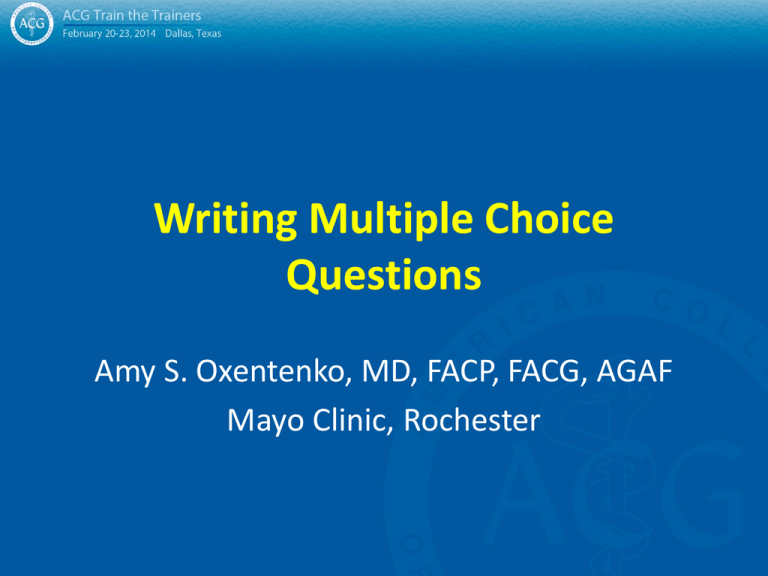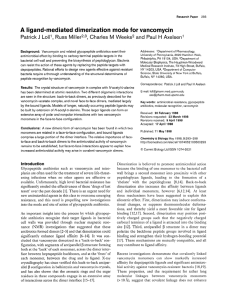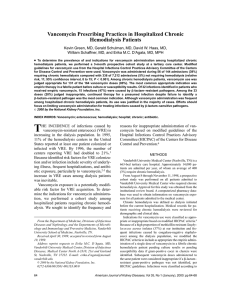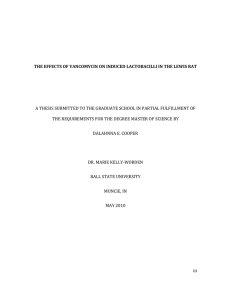Writing Test Questions
advertisement

Writing Multiple Choice Questions Amy S. Oxentenko, MD, FACP, FACG, AGAF Mayo Clinic, Rochester Disclosures • Relevant Relationships: Consulting work for MKSAP 14-17 On the IM-ITE exam committee Outline/Objectives • Define the test taker level before writing • List components of a multiple-choice question Objective, stem, lead line, options Annotated description of answers • Evaluate your questions Who Are You Writing For? • Med school GI pathophysiology course? More details; physiology on USMLEs • Resident end-of-rotation exam? Presentation, testing, management • GI Fellow board review course? More advanced understanding of above • IM or GI CME course? Very general vs very specific What are the Stakes of the Questions? • Board certification? • Passing a class/rotation? • Simple knowledge assessment? • Solely for interaction? The Stakes Reproducible Accurate Learning What Should Be Tested? • For a clerkship/CME course Match goals/objectives • For a standardized exam Match the targeted learner level How Often Will Learner Encounter Information • Frequent More relevant to test often Atypical manifestations • Infrequent Test the “can’t miss” things Life threatening Typical manifestations Types of Questions • Single best answer With clinical scenario • • • • • Factoid questions All of the following EXCEPT Matching True/False A and B, A and C, all of the above What are the Components of a Multiple Choice Question (MCQ)? Question Components STEM LEAD LINE OPTIONS Question Components ANSWER OBJECTIVE EXPLANATION PLEASE TAKE THE PRETEST. Steps to Writing the MCQ 1. Determine the objective 2. Create the lead line and options 3. Draft the stem 4. Write the explanation, if required The Objective Example: Objective • Recall alcoholic hepatitis What is wrong with this? Example: Objective • Treat a patient with alcoholic hepatitis with corticosteroids in the absence of contraindications More focused The Objective • Succinct sentence • Specifies a clinical skill to be learned • Uses action verbs to delineate a goal Recognize, diagnose, treat, manage • Avoid vague action verbs Remember, recall, know • Allows you to match curriculum Objective Format VERB + TOPIC + MODIFIER Action Verbs for Objectives Examples of Objectives: The Good, the Bad, the Ugly • Good: Diagnose niacin deficiency in a patient with carcinoid syndrome • Bad: Recall features of niacin deficiency • Ugly: Understand niacin deficiency Other Objective Examples • Select appropriate testing needed before beginning a biologic agent on an IBD patient. • Evaluate for splenic vein thrombosis in a patient with isolated gastric varices. • Manage a patient with celiac disease who has persistent symptoms on a GFD. • Identify peptic ulcers with stigmata for rebleeding that require endoscopic therapy. Lead Line Example: Lead Line A 56-year old alcoholic stumbles into the ER, ataxic, with nystagmus on examination. Although he appears confused and intoxicated, his blood alcohol level is normal. You start IV glucose and symptoms worsen. The next step would be to administer A. B. C. D. E. Niacin CT scan of the head Thiamine Insulin Dismissal to home What is wrong with this? Example: Lead Line A 56-year old alcoholic stumbles into the ER, ataxic, with nystagmus on examination. Although he appears confused and intoxicated, his blood alcohol level is normal. You start IV glucose and symptoms worsen. What is the next best step in management? A. B. C. D. E. Niacin CT scan of the head Thiamine Insulin Dismissal to home Keep lead line general; avoid syntax errors Lead Line • Most commonly used lead lines: Which of the following is the most likely diagnosis? What is the next best step in management? Half treatment options, half diagnostic options • Avoid negative lead lines: All of the following EXCEPT Which of the following is LEAST likely Which would you NOT do Lead Line • Keep the lead line generic “Next step” or “management” Allows diagnostic & therapeutic options • Avoid writing syntax or grammatical errors that help exclude answers • “Cover the options” rule Should be able to guess the answers The Options Example #1: Options What is the next best step in management? A. B. C. D. E. Add IV metronidazole Continue po vancomycin Start cholestyramine Begin rifaximin Stop the po vancomycin What is wrong with this? Example #1: Options What is the next best step in management? A. B. C. D. E. Add IV metronidazole Continue po vancomycin Start cholestyramine Begin rifaximin Stop the po vancomycin Mutually exclusive Example #2: Options What is the next best step in management? A. B. C. D. Metronidazole 500 mg po TID x 14 days Vancomycin 250 mg IV QID x 10 days Metronidazole 500 mg IV QID x 14 days Vancomycin 125 mg po QID x 14 days What is wrong with this? Example #2: Options What is the next best step in management? A. B. C. D. Metronidazole 500 mg po TID x 14 days Vancomycin 250 mg IV QID x 10 days Metronidazole 500 mg IV QID x 14 days Vancomycin 125 mg po QID x 14 days Testing too many concepts! Drugs, dose, route, duration Example #3: Options The cause of diarrhea in most patients with Zollinger-Ellison syndrome is: A. Antacid use B. High glucagon levels C. Fat malabsorption from pancreatic lipase inactivation by acid production What is wrong D. Bacterial overgrowth with this? Example #3: Options The cause of diarrhea in most patients with Zollinger-Ellison syndrome is: A. Antacid use B. High glucagon levels C. Fat malabsorption from pancreatic lipase inactivation by acid production Correct answer D. Bacterial overgrowth longer, detailed The Options • 4 or 5 options (less may be better) • One is not right and the rest 100% wrong CEAB D Wrong Right The Options • 4 or 5 options (less may be better) • One is not right and the rest 100% wrong • One is correct, the rest plausible C E Least correct A B D Most correct Options • Avoid mutually exclusive options Increases/decreases/same Always/never; stop/continue • Each option should test one concept Drug OR dose OR route OR duration • Keep options brief; similar in length • Options should be homogeneous Length, complexity Stem The Stem • Chronologic order of presentation Age, gender (avoid race unless needed) Site of visit (ER, clinic, hospital) Chief complaint (add features) PMH/Meds/FH/SH (relevant or distracter) Vitals/Exam/Labs/Tests (pertinent) The Stem • Fine to have details to make the other options attractive; avoid extraneous info • It takes time to read; make sure it is fitting in with time to administer test • Organize labs if many The Explanation The Explanation • Explain why right answer correct first • Explain why wrong answers incorrect – Do this chronologically • Example for explanation order: – If correct answer is B – B, A, C, D, E How Do You Analyze Your Questions? Question Performance • Goal for correct answer 50-70% 40-90% may be allowed at times Difficulty score of > 90% (too easy) Difficulty score of < 40% (too hard) • See if it discriminates: Top test takers Bottom test takers Performs well; difficulty ok and discriminating (A) Answer (B) (C) (D) * Top 50% 7 80 9 4 Bottom 50% 19 44 28 9 Total 13 62 18 7 Option 0.62 Performs poor; difficulty ok, non-discriminating Option (A) (B) (C) (D) Answer * Top 50% 62 0 7 31 Bottom 50% 80 0 7 13 Total 71 0 7 22 Difficulty 0.71 Performs poor; difficulty low (hard), non-discriminating Option (A) (B) (C) Answer (D) * Top 50% 3 45 2 50 Bottom 50% 6 51 5 38 Total 5 48 3 44 Difficulty 0.44 http://www.nbme.org/publications/item-writing-manual-download.html The Pretest: How Did You Do? Avoid Duplicating Terms 1. The primary role of the denter is to move the a) b) c) d) orme latten denter pin stagle Avoid Repeat Digits, Look at Pattern 2. How many steps are in an average carrum? a) b) c) d) 3.7 370 240 37 Avoid Absolute Terms: Never, Always, Every, All, None 3. The grotto is frequently humid because a) b) c) d) every ictal is fabliterous langers are always gantering reslins are often dewinest culers are never liblis Avoid Inhomogeneous Options 4. Rigniter is a a) b) c) d) form of glatnick prestigious subset of the family of honorary gloutnins signal by a sellant crown of slessings Avoid Repeating the Correct Option More Than Others 5. Which of the following pairs contributed the Sterlik track? a) b) c) d) Smith & Johnson Jones & Smith Johnson & Thomson Smith & Davis Avoid Syntax or Grammatical Errors 6. The tarnon is proceeded by a a) b) c) d) ofler argling isterin glantern Questions? Summary • Know your learner level • Writing order: objective, lead line, options, stem • Avoid errors in MCQ writing • Evaluate the effectiveness of your MCQs Thank you! oxentenko.amy@mayo.edu







